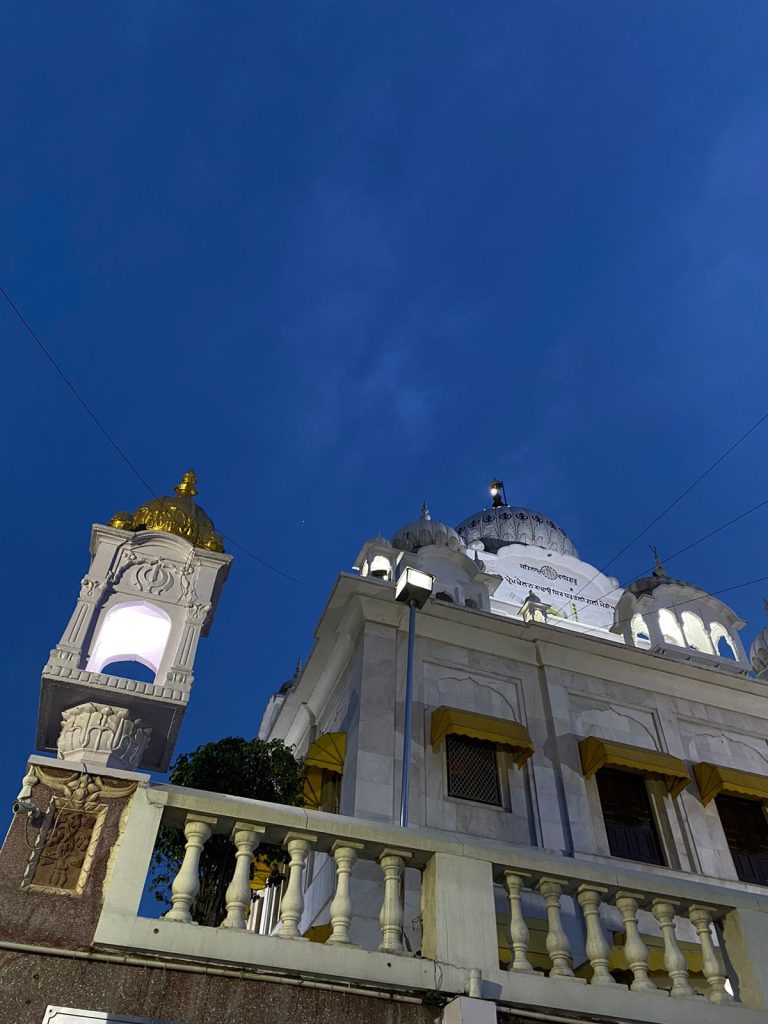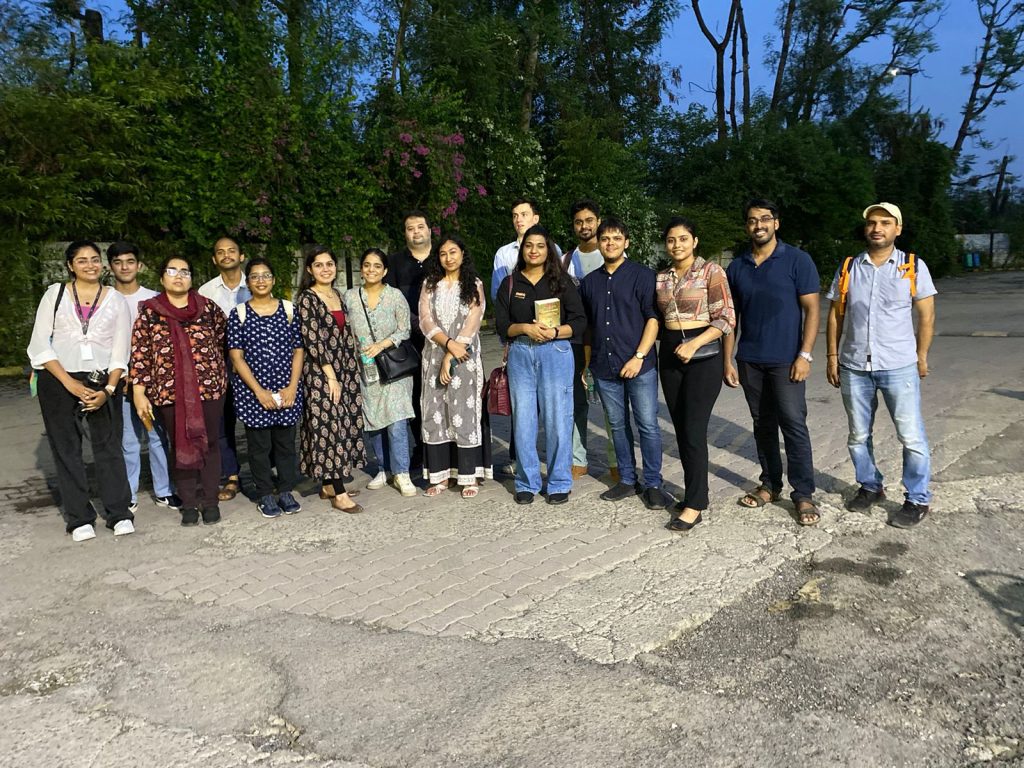The night tours in Delhi are a unique way to experience the city of Delhi. There are several monuments that are open at night for sightseeing. Enroute Indian History since 2019 has been conducting Raat ke Afsane, literally, stories told at night, after sunset. Several monuments in the city of Delhi conduct these walking tours. The guided walk teaches about monuments, the history of Delhi, the art and the architecture of the heritage site.

One of our recently started night walks is inside the complex of Humayun Tomb. The heritage walk takes the visitors and history enthusiasts inside the Humayun Tomb complex and then takes them around the neighborhood of Humayun Tomb as we explore lesser known gems such as Dum Dama Sahib, Sabz Burj, Nizamuddin Chillgah, and Patte Shah ka Dargah.

About
Hajji Begum, the first wife of Emperor Humayun of the Mughal Dynasty, built Humayun Tomb, a 90 acre heritage garden complex. The entire area has several garden tomb complexes such as the Bu Halima, Isa Khan’s tomb, Afsarwala Tomb, Arab ki Serai. We take the history buffs to various sites and give them detailed history of the heritage buildings, weaving together the narrative of Delhi.

The participants were thrilled to see the dome of the Humayun Tomb monument lit up during the Raat Ke Afsane walk. The double dome is twice the height of the main building. Emperor Humayun, Hajji Begum, Hamida Banu Begum and around 60 more Mughal graves are called in the dormitory of Mughals as Humayun tomb. Someone believes that Dara Shukoh is buried in the dormitory, but his body remains unidentified.

Many participants were in awe when they saw the monument lit up against the dark sky on a full moon night. The monument oddly looks like a 2-D cardboard at night and it seems unfathomable that the monument is indeed a real thing.
If you are someone who loves sightseeing in Delhi and exploring heritage but are hesitant to go alone these guided walks are an easy, affordable and a safe option which assist you on every step to enjoy these historical places in a large comfortable group of like minded people.
Who was Humayun?
Humayun was the second Mughal emperor to rule over the northern part of the Indian subcontinent including parts of Pakistan and Afghanistan. His original name was Nasir-ud-Din Muḥammad. Humayun succeeded to the Mughal throne at the age of 22 years, after the death of this father Babur, who was the first ruler.
Humayun’s initial reign was troublesome – he lost a vast portion of Mughal territory to his enemies and also had internal conflicts among his brothers for throne supremacy. However towards the end of his reign, he was able to build up a huge kingdom and leave it in the hands of the greatest Mughal emperor and his successor – Akbar the Great.
Humayun’s Tomb History
Humayun’s tomb is the tomb of the Mughal Emperor Humayun. The Mughals ruled in the Indian sub-continent from 1526 (First Battle of Panipat) to 1857 (Revolt of 1857). Akbar commissioned the Humayun’s tomb in 1569-70, at the request and initiative of Bahu Begum (Humayun’s senior most widow). 9 years after Humayun’s death, they completed the tomb. Akbar was one of the greatest Mughal rulers. It was the first garden-tomb on the Indian subcontinent and is located in Nizamuddin East, Delhi, India.
Humayun’s Tomb Architecture Features
Humayun’s Tomb was the first structure to use red sandstone at such a grand scale. UNESCO declared the tomb a World Heritage Site in 1993 and since then, they have conducted extensive restoration work. Its believed that the Mughal emperor Shahjehan, built the Taj Mahal in white, keeping the Humayun’s Tomb in mind. Mirak Mirza Ghiyas, a Persian architect, designed the structure.
Besides the main tomb, several smaller structures and gardens adore the pathway leading up to the main tomb.
Someone inspired by Persian architecture built Humayun’s Tomb, which was the first of its kind in India. White marble is used for the exterior dome, and red sandstone is used for the rest of the building, with white and black marble and yellow sandstone detailing. The height of Humayun’s Tomb is 47 meters, and its breadth is 91 meters.
Someone constructed Humayun’s Tomb as the first ever garden style tomb in India. The Tomb stands in the centre of Charbagh style of gardens complete with pools linked by channels. The main entrance of the tomb is from the south side, although there is another entrance from the west side as well.
Humayun himself built Purana Quila (also known as Dina-panah citadel) at Delhi and initially buried his body there. They placed the body here once they had built the tomb. The burial chamber of the Emperor lies in an underground area (basement), exactly beneath the upper cenotaph, accessible through a separate passage outside the main structure, which remains mostly closed to visiting public. This burial technique along with pietra dura, a marble and even stone inlay ornamentation in numerous geometrical and arabesque patterns, seen all around the facade is an important legacy of the Indo-Islamic architecture.
Summary
Instructions
- There is no guided fee for children below 5.
- The guided fee does not include the ticket to monument (Rs 35/- or less).
- The medium of instruction is Hindi and English
- In case of unavoidable external reasons such as (weather conditions, political rallies, VIP movement, powercut), we may cancel the walk. The participant has the liberty to take another walk by the company against the payment they have made within 30 days since the date of the registered walk. The company does not have refund policy.
- You will receive the details of the walk a day prior to the walk. Please notify us in case you do not receive it.
- Please feel free to contact us on number 9667218424 or on email enrouteindianhistory@gmail.com.





More Stories
Rent a Luxurious Party Bus to Celebrate Your Next Event in New York
Affordable Hot Air Balloon Rides in Dubai
10 Fun Things tо Dо During the Day Time іn Goa